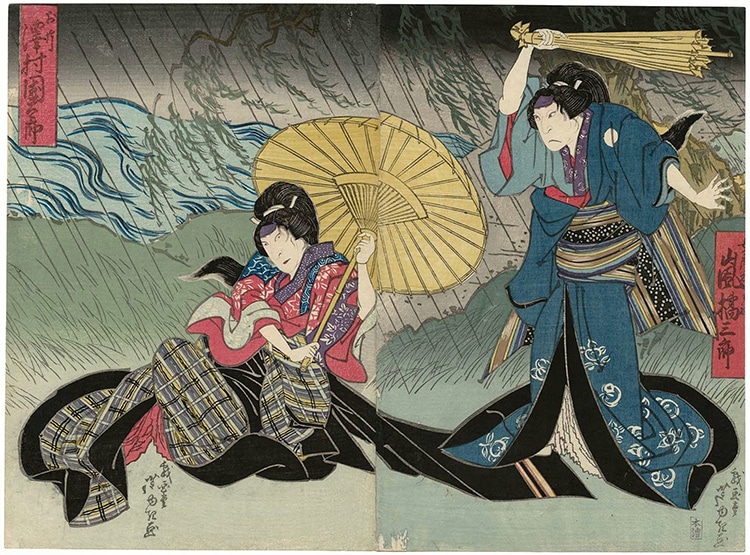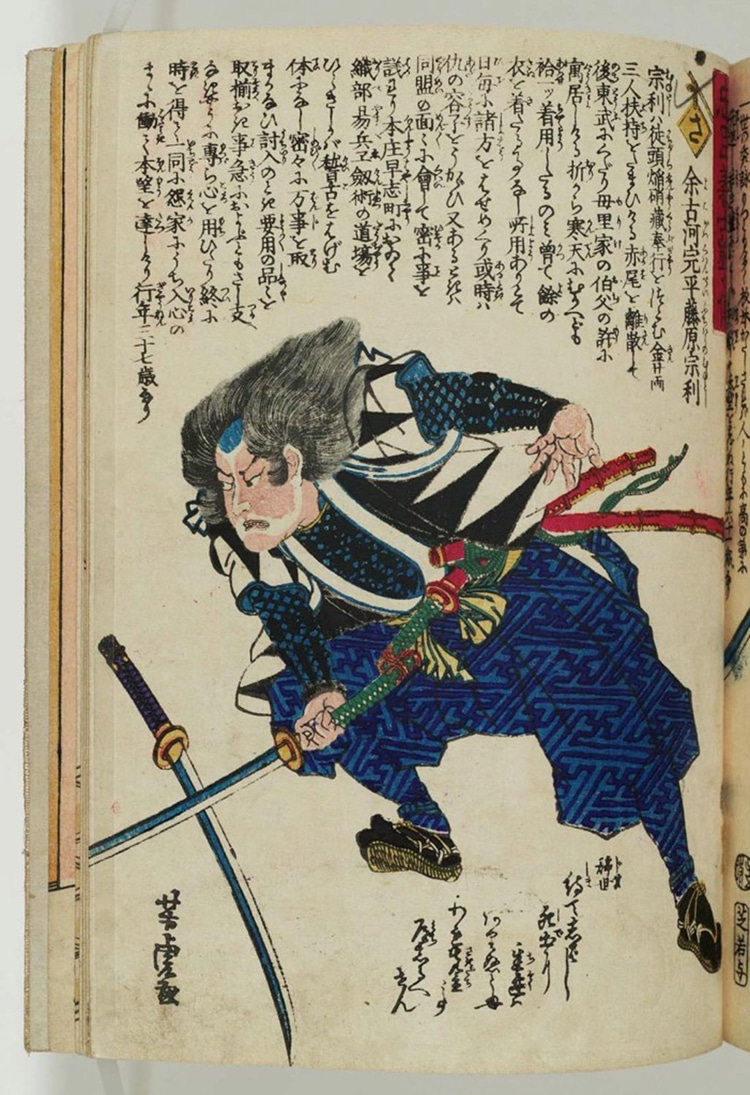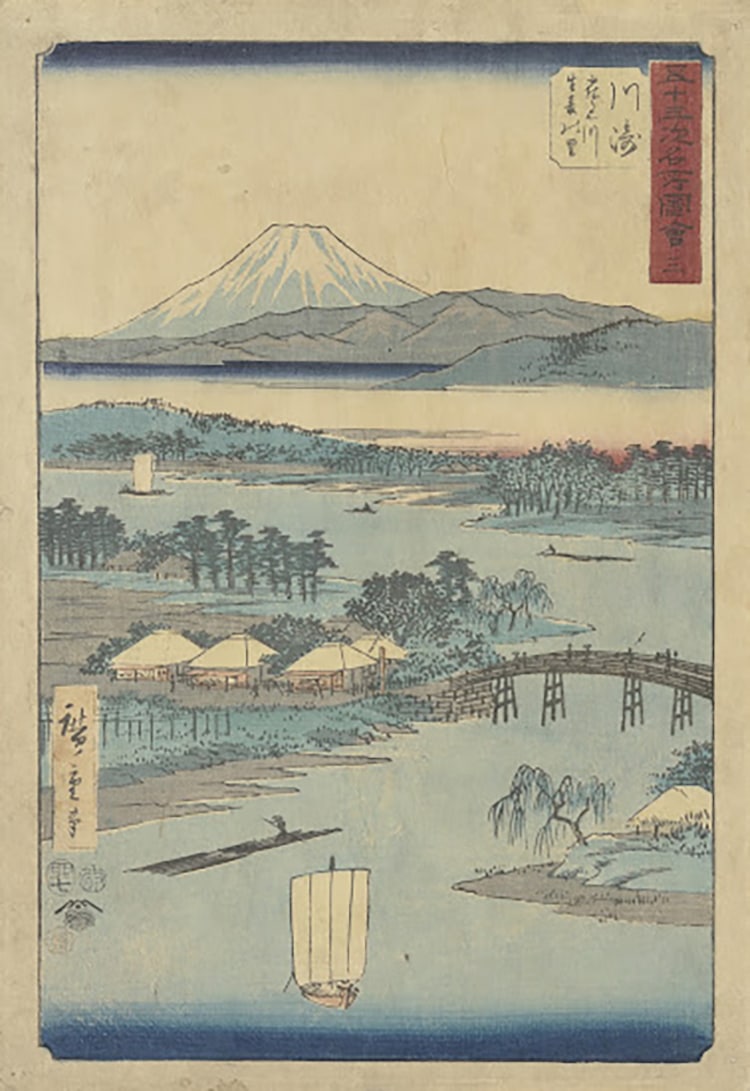(Photo:MFA via ukiyo-e.org)
Japan has a rich and colorful artistic history.
In the late 17th century, woodblock printing became a popular medium of artistic expression.
Ukiyo-e works depict famous scenes from literature and theater, as well as lovely landscapes and other subjects.

“Actors Arashi Kitsusaburô (R) and Sawamura Kunitarô (L),” Ukiyo-e print by Gigado Ashiyuki, 1828. (Photo:MFA via ukiyo-e.org)
Many thousands of prints were produced and widely distributed by publishers.
Ukiyo-e Search has a helpful breakdown by period and artist.
Each of the 223,128 (and counting) works is free to download.

“The Syllable Sa: Yokogawa Kanpei Fujiwara no Munetoshi,” from the series “The Story of the Faithful Samurai in The Storehouse of Loyal Retainers (Chûshin gishi meimei den),” by Utagawa Yoshitora, 1864. (Photo:MFA via ukiyo-e.org)
The site is also useful for art historians, who can track prints and find long-lost copies.
Other collections are also virtually explorable.
The Metropolitan Museum of Art has digitized and made available hundreds of beautifulillustrated Japanese books.

“Kawasaki: The Village of Namamugi on the Tsurumi River, no. 3,” from the series “Collection of Illustrations of Famous Places near the Fifty-Three Stations [Along the Tōkaidō],” by Utagawa Hiroshige, 1858. (Photo:Van Gogh Museum)
These works include artwork by Utamaro, Hokusai, and Hiroshigeeach famous woodblock artists.
TheVan GoghMuseum in Amsterdam also offers its collection ofwoodblock prints online.
The famous artist left behind a vast collection of Japanese art that inspired his own work.
Kawasaki: The Village of Namamugi on the Tsurumi River, no.